This is a great tool for the raspberry pi. I even used it with an Allo USBridge Signature. connecting to a DAC with I2S sounds even better than with USB. Just ordering the FiFo from IAN Canada to get a precise clock.
New Customer?
Create your accountNo products
Prices are tax included
By buying this product you get 4 loyalty points
Accessories for this product
This product has been replaced by the new version, the IAN CANADA HDMIpi MKII.
IAN CANADA HDMIPI Transmitter
Transmitter I2S / DSD / PCM / DOP to HDMI
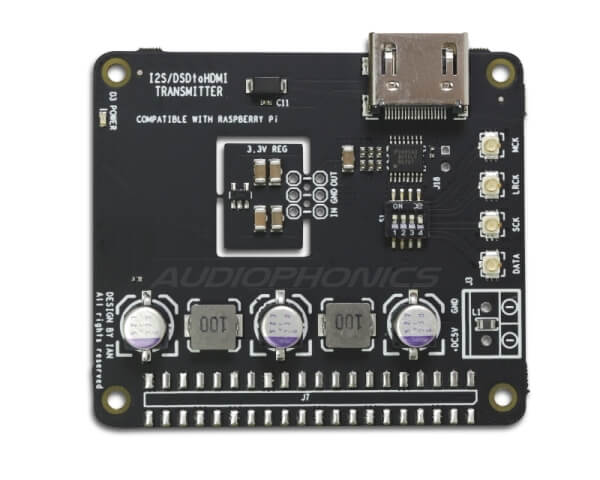
This module allows you to recover the outgoing digital audio stream of the GPIO port of a Raspberry Pi (or one of its HATs) and send it to the balanced LVDS format on an HDMI port.
This allows using a combo Raspberry Pi + reclocker as high-fidelity digital audio player connected to a remote DAC. In that, it differs from the usual strategy of mounting the DAC directly on the RPI or to establish a connection by converting the digital stream to S / PDIF.
The HDMIPi transmitter allows installations where the DAC is separated from Pi (not on top), while maintaining an I2S encoded digital stream with the LVDS standard (without conversion that may alter the signal).
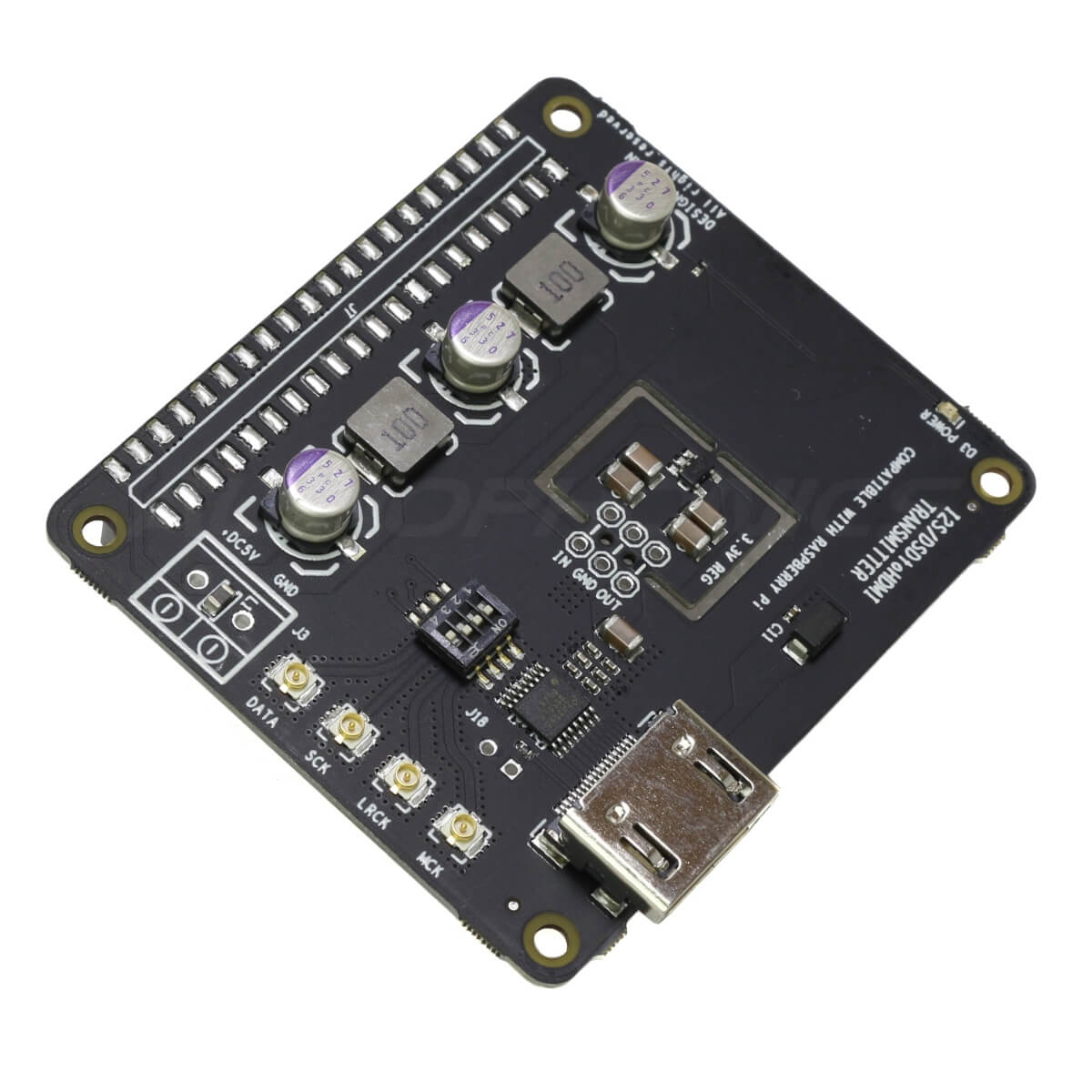
High fidelity transmitter
The HDMIPi Transmitter module by Ian Canada supports any input stream up to 768kHz and DSD signals up to DSD1024 (native). It can also handle signals up to DSD256 DoP.
Its 4 inputs Data / SCK / LRCK / MCKL are easily identifiable and can connect with ease through U.FL connectors which are already mounted on the surface.
It has a GPIO connector through which it can be mounted on a FIFOPI reclocker unit by Ian Canada (or a Kali from Allo provided you have a cable U.FL to bare wire available).
Note that a direct installation on Rapsberry Pi with DAC able to run without MCLK is possible. However it may be completely out of place in most high-fidelity contexts.
Multiple power options
By default, the HDMIPi will try to power itself via the GPIO port.
It is possible to override the GPIO power and use the phoenix connector (provided) after welding it on the PCB. The user can then connect a 5VDC / 100mA supply (mini). The use of a regulated linear power supply allows a clean signal with very low audio parasite.
For the most demanding projects, it is possible to remove the integrated power unit in order to connect a super capacitor or LiFePO4 battery. The circuit is thus completely independent of the main domestic circuit.
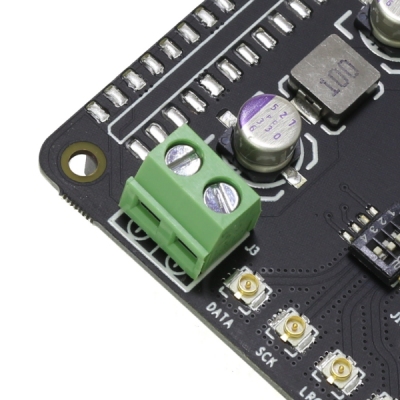
Photo of the set when mounted
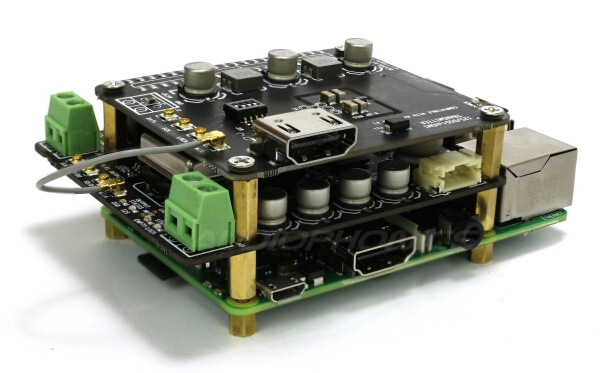
This figure illustrates the whole set I2S / HDMI mounted on a FIFOPI. The latter is itself mounted on a Raspberri Pi3B+.
When mounted this way, the whole can communicate via HDMI with any DAC equipped with an I2S LVDS input to HDMI.
For convenience, Ian Canada also offers the dedicated receiver which mainly offers the advantage of being powered directly via the HDMI cord used for interconnection.
Caution FifoPi and the Raspberry Pi are not supplied and must be purchased separately.
HDMI pinout (Format PS Audio / Audio-GD)

Dimensions & Spacings

| Specifications | |
|---|---|
| Type | I2S transmitter to HDMI LVDS |
| Needs clock | Yes * Except with DAC that can run without MCLK |
| Type of input signal | I2S DSD PCM DOP |
| Output signal | LVDS HDMI |
| Inputs | GPIO x1 U.FL x 4 (DATA, SCK, LRCK MCK) |
| Outputs | HDMI Female x1 (Defaut protocol is LVDS PSAUDIO / AUDIO-GD) |
| Power supply | 5V 3.3V (super capacitor or LiFePO4) |
| Sampling supported | up to 768kHz DSD1024 DOP256 |
| Dimensions | 56.5 x 65 mm |
| Distances | 49 x 60 mm M2.5 |
| Weight | 23g |
| Input | I2S |
| Input | SPDIF |
| Output | I2S LVDS via HDMI |
| DAC / ADC Chip | NC |
| Max sampling rate | 768kHz |
| Max sampling rate | DSD1024 |
Average votes 5.0 / 5 1 reviews | Why write products reviews ? You can share your feelings about products and help other people by sharing your experience |
Juergen N.
This is a great tool for the raspberry pi. I even used it with an Allo USBridge Signature. connecting to a DAC with I2S sounds even better than with USB. Just ordering the FiFo from IAN Canada to get a precise clock.


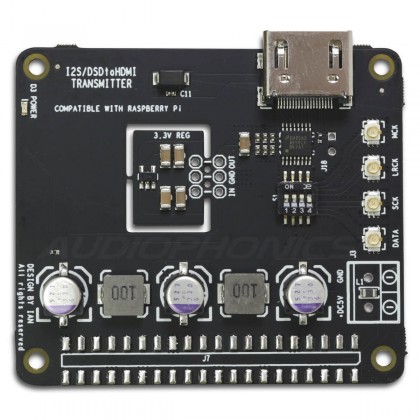









![[GRADE B] AUDIOPHONICS DAW-S250NC Class D Integrated Amplifier NCore NC252MP DAC ES9038Q2M WiFi Bluetooth 2x250W 4 Ohm](https://www.audiophonics.fr/61971-thumb_default/audiophonics-daw-s250nc-class-d-integrated-amplifier-ncore-nc252mp-dac-es9038q2m-wifi-bluetooth-2x250w-4-ohm-32bit-768khz-dsd.jpg)
























